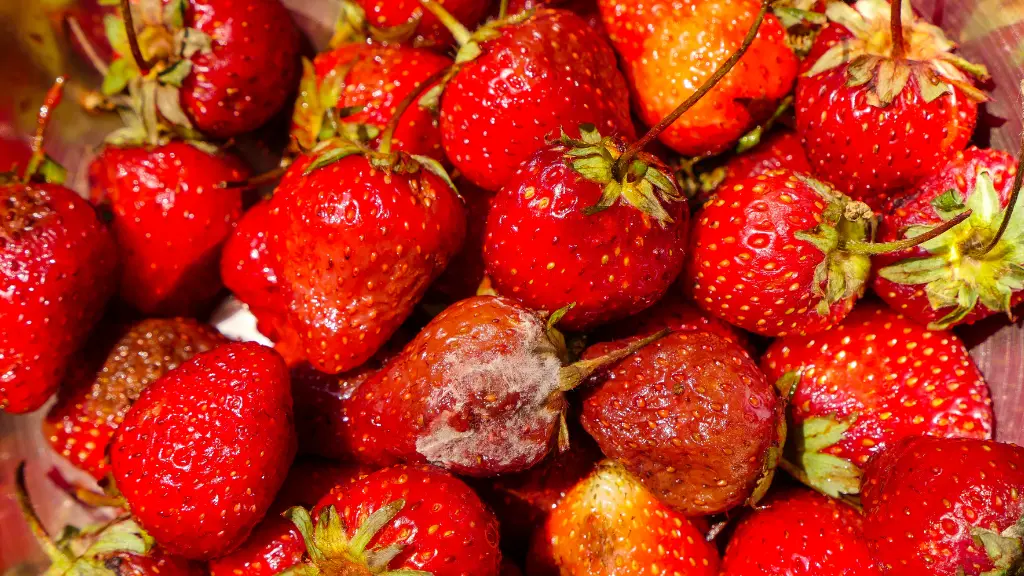Finding a moldy berry in a fresh container can be frustrating, especially when you wonder if the rest of the batch is still safe to eat. Mold is a common issue in perishable foods like fruits, but how much damage does one moldy berry cause to the others?
Is it safe to just remove the bad berry, or should you throw the whole bunch away? In this article, we will explore how mold spreads, what it means for your food safety, and when it’s okay to eat berries after mold appears.
You May Also Like: Why Do Carbs Give Me Headaches?
What Causes Mold on Berries?
Berries like strawberries, raspberries, and blackberries are highly perishable. They are naturally rich in moisture and sugar, which makes them a prime target for mold growth. Mold can develop quickly on the surface of berries, especially if they are stored improperly.
Mold spores are present in the air, and when they come into contact with the moist surface of berries, they begin to grow. These spores thrive in environments with moisture, warmth, and organic material, which is why berries are so susceptible to mold.
How Mold Spreads on Berries
When one berry in a batch begins to show signs of mold, it’s important to understand that mold doesn’t just stay on that berry. Mold spreads through microscopic spores, which can travel through the air or on surfaces. So, if you find mold on one berry, it’s likely that the mold is already affecting others, even if it isn’t visible yet.
Here’s how the process works:
- Mold Spreads Quickly: Once mold begins to form on a berry, it can spread to nearby berries. This is why moldy berries should be removed as soon as you spot them to prevent the spread.
- Moisture Helps Mold Grow: Mold thrives in moist conditions. When berries are stored in containers that aren’t properly ventilated, moisture can build up, creating the perfect environment for mold to develop.
- Visible Mold vs. Hidden Spores: Even if you don’t see mold on other berries, the spores can still be present. These spores can quickly spread to other berries, especially if they are touching or stored in close proximity.
Can You Eat Berries with Mold?
Now comes the big question: Is it safe to eat berries when you spot mold on one or a few of them? The answer isn’t always straightforward, but there are a few guidelines to follow to ensure your safety.
1. Remove the Moldy Berry and Check Others
If you find one moldy berry, it’s a good idea to remove it immediately. However, simply removing the moldy berry does not guarantee that the others are safe to eat. Examine the surrounding berries for signs of mold or soft spots. Mold can spread quickly, so if multiple berries show signs of mold, it’s best to discard the entire batch.
2. Harder Berries vs. Soft Berries
The type of berry matters when it comes to mold safety. Harder fruits, like blueberries, are less likely to have mold penetrate deep inside them. With these, you can often just remove the moldy berry and inspect the others carefully.
However, softer berries like raspberries and strawberries have more porous surfaces, and mold can penetrate deeper into the fruit. In these cases, it’s safer to discard any moldy berries and potentially the entire batch if mold has spread to others.
3. Washing Berries
Washing berries can help remove surface mold, but it won’t eliminate mold that has already penetrated deep inside the fruit. If mold is visible on the surface of a berry, it’s best to discard it.
4. Moldy Berries Can Cause Allergies and Illness
Mold can trigger allergic reactions and respiratory issues for some people, especially those with sensitivities. Eating moldy food can also lead to foodborne illness, as mold can produce mycotoxins—substances that can cause illness when ingested. For this reason, it’s important to discard moldy berries rather than risk consuming them.
When Is It Safe to Eat Berries After Finding Mold?
It’s often safest to assume that moldy berries will contaminate the rest of the batch, even if no visible mold is present on other berries. However, there are instances when you can salvage the good berries:
- If the Mold Is Isolated: If only one berry shows signs of mold, and it’s an isolated case, you can carefully remove the moldy berry and check the rest for mold or spoilage. If the remaining berries are firm, without any mold, and smell fresh, they may still be safe to eat.
- If the Berries Are Refrigerated Properly: Berries should be stored in the fridge in a dry, ventilated container to prevent mold from forming. If the berries have been properly stored, there is less chance of the mold spreading, and you may have better success removing the contaminated berries.
- If the Mold Is Limited to the Surface: If you find mold on the skin of a berry, and the fruit appears to be in good condition otherwise (firm texture, no soft spots), it may be possible to salvage the other berries by carefully removing the mold.
Preventing Mold Growth on Berries
The best way to deal with moldy berries is to prevent mold growth in the first place. Here are some tips for keeping your berries fresh and mold-free for as long as possible:
- Store Berries in the Refrigerator: Keep berries in the fridge to slow down the growth of mold. Make sure to place them in a container with good ventilation, such as a berry basket or perforated plastic container.
- Don’t Wash Berries Until You’re Ready to Eat Them: Excess moisture can promote mold growth, so avoid washing berries until just before you plan to eat them. Excess water left on the berries can create an ideal environment for mold.
- Remove Moldy Berries Immediately: When you buy fresh berries or return from the store, check the entire container and remove any moldy berries right away. This prevents mold from spreading to other berries.
- Use Paper Towels to Absorb Excess Moisture: Placing a paper towel in the container with the berries can help absorb excess moisture, keeping the berries dry and reducing the chances of mold growth.
- Buy Fresh Berries in Smaller Quantities: Because berries have a short shelf life, it’s better to buy them in smaller amounts that you can consume in a few days, rather than buying large containers that may spoil before you can eat them.
Conclusion
In short, one moldy berry can potentially ruin the rest, but the degree of contamination depends on the type of berry, how it’s stored, and how far the mold has spread. If you find mold on one berry, it’s crucial to check the others carefully and remove any that are affected. Sometimes, you can salvage the remaining berries if mold is isolated and they appear fresh.
By following proper storage techniques and inspecting your berries regularly, you can prevent mold growth and enjoy fresh, safe fruit. If you do find moldy berries, remember that it’s better to err on the side of caution and discard them to avoid health risks.










